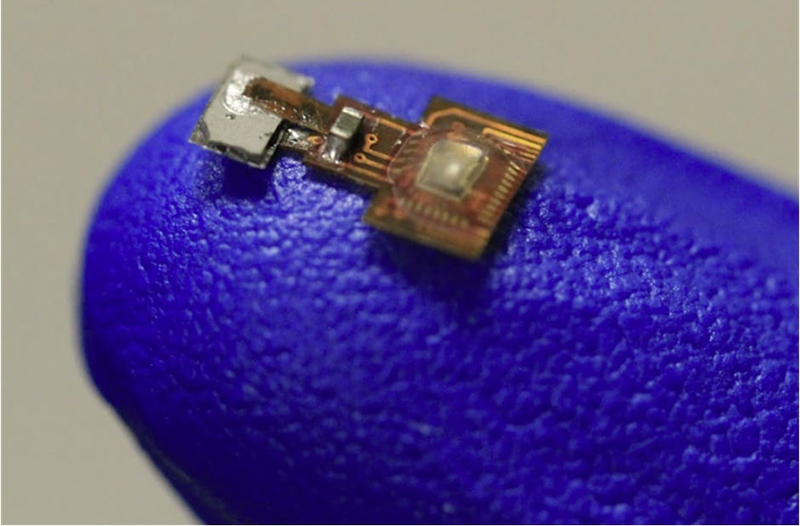A team of Rice University engineers has developed the first-ever neural implant that can be both programmed and charged remotely with a magnetic field. This breakthrough may make possible imbedded devices like a spinal cord-stimulating unit with a battery-powered magnetic transmitter on a wearable belt.
The integrated microsystem, called MagNI (for magnetoelectric neural implant), incorporates magnetoelectric transducers. These allow the chip to harvest power from an alternating magnetic field outside the body, reports Rice University.
MagNI targets applications that require programmable, electrical stimulation of neurons, for instance to help patients with epilepsy or Parkinson’s disease.
Read more Innovative Brain Implant Reads and Stimulates Brain to Improve Parkinson’s Treatment
“This is the first demonstration that you can use a magnetic field to power an implant and also to program the implant,” Kaiyuan Yang, an assistant professor of electrical and computer engineering at Rice. “By integrating magnetoelectric transducers with CMOS (complementary metal-oxide semiconductor) technologies, we provide a bioelectronic platform for many applications. CMOS is powerful, efficient and cheap for sensing and signal processing tasks.”
Yang introduced the project at the International Solid-State Circuits Conference in San Francisco.

According to Yang, MagNI has clear advantages over current stimulation methods, including ultrasound, electromagnetic radiation, inductive coupling and optical technologies.
“People have been demonstrating neural stimulators on this scale, and even smaller,” Yang said. “The magnetoelectric effect we use has many benefits over mainstream methods for power and data transfer.”
Because the magnetic field also transmits control signals, Yang said MagNI is also “calibration free and robust.”
“It doesn’t require any internal voltage or timing reference,” he said.
Components of the prototype device sit on a flexible polyimide substrate with only three components: a 2-by-4-millimeter magnetoelectric film that converts the magnetic field to an electric field, a CMOS chip and a capacitor to temporarily store energy.
Read more Elon Musk Unveils Neuralink Brain Implant, Connecting Human Brains to Computers
The team successfully tested the chip’s long-term reliability by soaking it in a solution and testing in air and jellylike agar, which emulates the environment of tissues. They also validated the technology by exciting Hydra vulgaris, a tiny octopus like creature studied by Robinson’s lab, according to the Rice University report.












